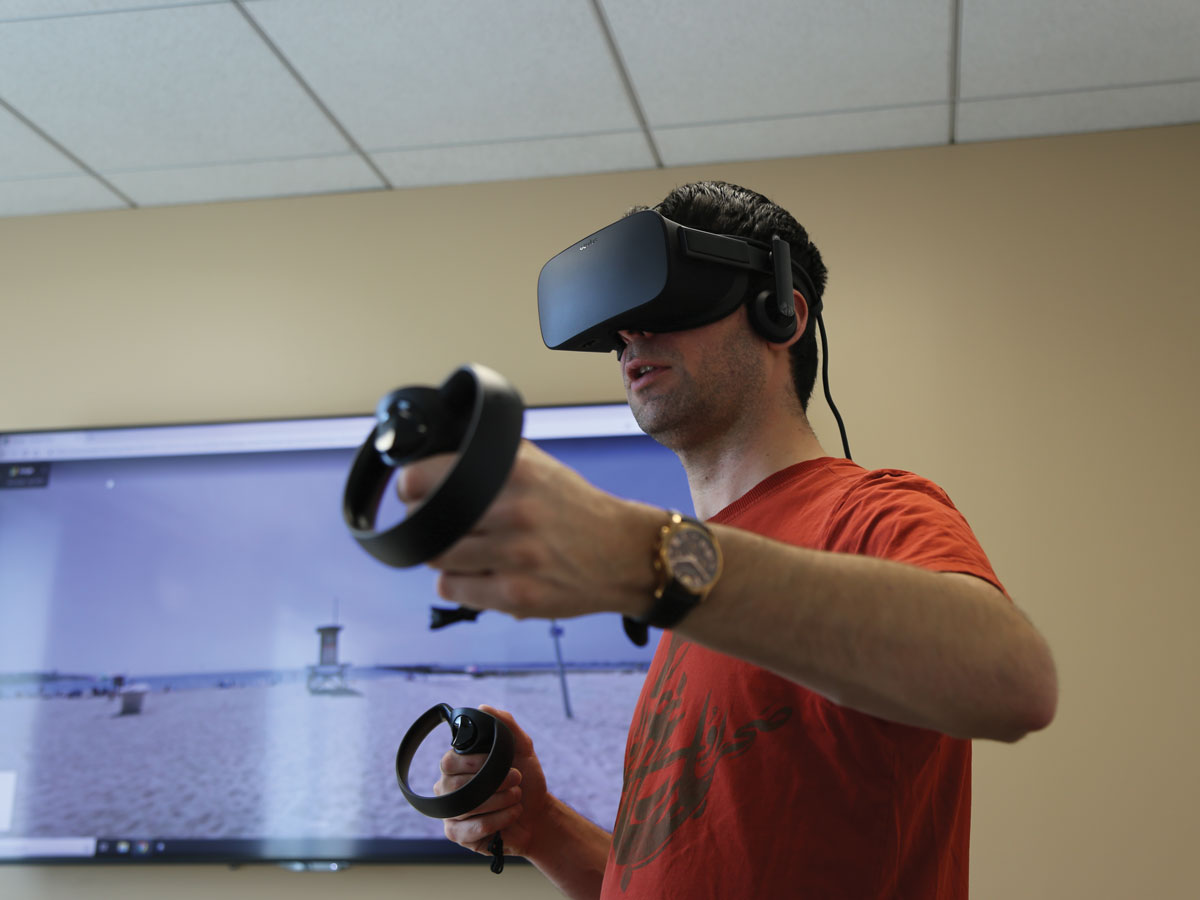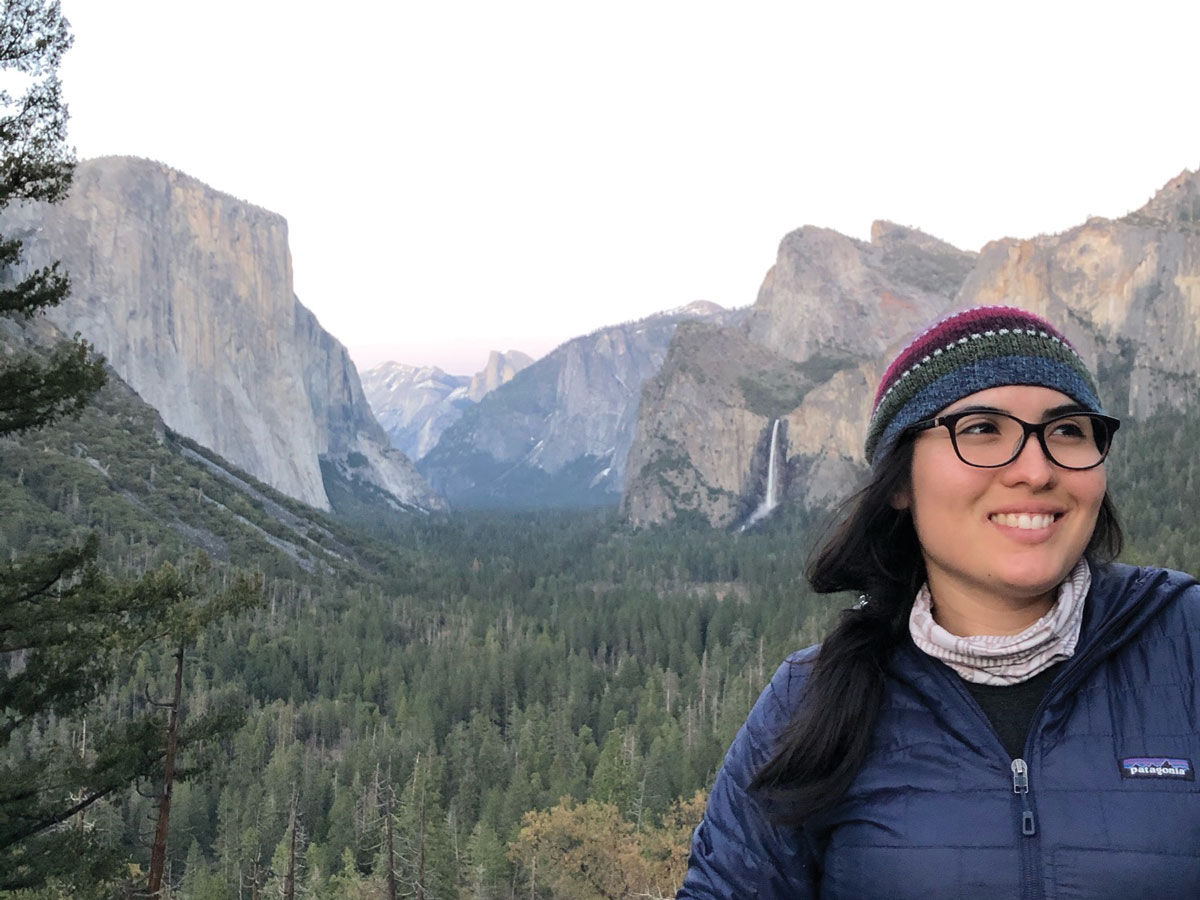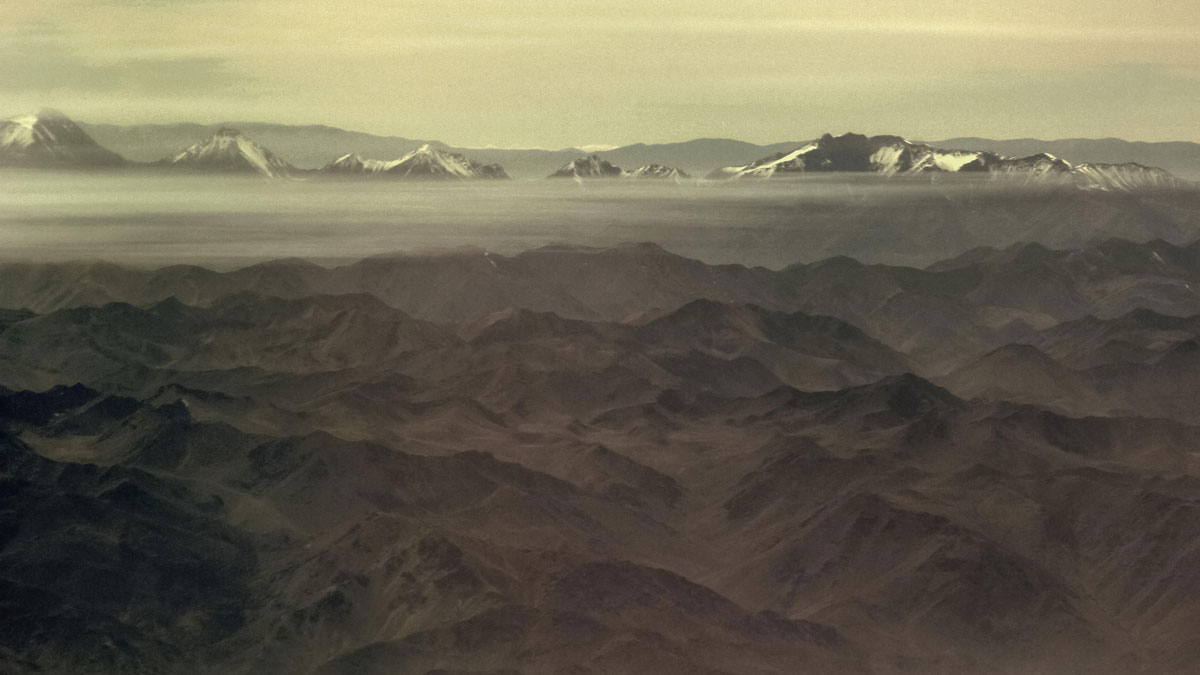An upward trend in fossilized charcoal indicates that wildfires may have contributed to extinctions during the Great Dying.
Jackie Rocheleau
Alexandre Martinez: The Virtual Reality of Climate Change
Martinez brings science to the public using technologies like virtual reality to improve understanding of climate change.
Jimena Díaz Leiva: Changing Conservation Narratives
Díaz Leiva has been to Peru and beyond as she works on environmental and social justice projects.
The Sun Bakes Wildfire Smoke, Changing Its Toxicity
A new study questions the narrative that dilution is the solution to pollution.
Iodine-Laden Desert Dust Is Eating at Ozone Pollution
In a happy accident, scientists found a potential solution to an atmospheric chemistry mystery. Their findings could be a missing piece in the iodine cycle and in atmospheric models.
Remote Sensing Could Predict Well Water Quality After Floods
After a flood, most people rely on officials to test public water sources. Private well owners are on their own, with little data to guide testing and treatment. New research seeks to change that.
Neighborhoods Are Feeling the Heat of Climate Change
It’s no secret there are disparities in exposure to climate change’s effects. A new study zeroes in on the demographics of neighborhoods subjected to the hottest temperatures.
Las bombas de calor pueden reducir las emisiones de los hogares, pero no en todas partes
Un nuevo estudio muestra que, en los lugares correctos, las bombas de calor pueden ayudar a los propietarios a reducir las emisiones de gases de efecto invernadero, ahorrar en costos de calefacción y aire acondicionado, y promover la salud pública.
Heat Pumps Can Lower Home Emissions, but Not Everywhere
A new study shows that in the right places, heat pumps can help homeowners lower greenhouse gas emissions, save on heating and cooling costs, and promote public health.
Sowing 1,000 Trees into Shanghai’s Urban Fabric
A new development blends riverside nature with commercial construction.










